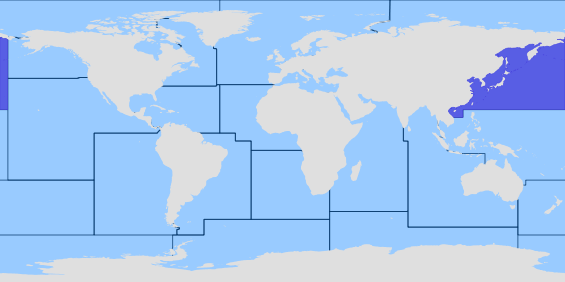inglêsThe carapace has the median teeth before the crevical groove blunt and inconspicuous: the rostral tooth is reduced to a tubercle, the pregastric tooth is replaced by a double row of 1 or 2 tubercles and a few inconspicuous median tubercles. The gastric tooth is the most conspicuous, it isbroad and blunt and bears a double row of tubercles. The surface of the carapace is very uneven and the tubercles are high. Between the postrostral and branchial carinae there are a few tubercles and many smooth areas. The abdomen shows a distinct median longitudinal carina on somites 2 to 5, that of somite 3 is by far the highest, and (like the one fo somite 4) bears numerous tubercles laterally. Somite 1 is quite smooth, and has the transverse groove only slightly noticeable in the extreme lateral parts. The exposed part of the following somites show no arborescent pattern, but in each somite there is a wide transverse groove there. In somite 2, both before and behind this groove there is a perfectly smooth broad ridge, a character in which the species differs from most others. In the following somites these ridges are tuberculate. In somites 4 to 6 the posterior margin is tuberculate. The fourth antennal segment has a sharp and high oblique median carina. Outside the carina the upper surface of the segment shows a row of tubercles. The outer margin of the segment bears 4 or 5 teeth (apical tooth of the segment not included), the inner margin has 5 to 7 teeth of irregular size. The anterior margin of the thoracic sternum is deeply U-shapedly incised. Each of the thoracic sternites bears a rounded median tubercle. The dactyli of pereiopods 3 to 5 show two short fringes of hair each. Colour: the dorsal surface of the body is greyish or purplish brown with darker spots. The distal segment of the antenna is often lighter. The first abdominal somite shows dorsally often a dark blue colour (Ref. 252).
Ver tradução
Traduzido do inglês por BING
Esta tradução é meramente indicativa: devido à qualidade limitada do texto de partida, as descrições morfológicas estão disponíveis apenas em inglês na versão BETA do sistema. Em futuras versões, será disponibilizada informação multilingue.
portuguêsA carapaça tem os dentes medianos antes o sulco crevical obtuso e discreto: o dente rostral é reduzido a um tubérculo, o dente pregastric é substituído por uma fileira dupla de 1 ou 2 tubérculos e alguns tubérculos medianos discretos. O dente gástrico é o mais visível, isbroad e sem corte e carrega uma dupla fileira de tubérculos. A superfície da carapaça é muito desigual e os tubérculos são elevados. Entre o postrostral e branquial carinae há alguns tubérculos e muitas áreas lisas. O abdômen mostra um distinto carina longitudinal mediana na somitas 2 a 5, a do somite 3 é de longe o mais elevado e (como o um somite fo 4) ursos numerosos tubérculos lateralmente. Somite 1 é muito bom e tem o sulco transversal apenas ligeiramente perceptível nas partes laterais extremas. Parte exposta do somitas a seguir não mostram nenhum padrão arborescente, mas em cada somite há um sulco transversal larga lá. Em somite 2, antes e atrás deste sulco, há um cume amplo perfeitamente liso, um personagem que a espécie difere da maioria dos outros. As seguintes somitas estes cumes são tuberculate. Em somitas 4 a 6 a margem posterior é tuberculate. O quarto segmento da antena tem uma nítida e alta carina mediana oblíqua. Lá fora o carina a superfície superior do segmento mostra uma linha de tubérculos. A margem exterior do segmento tem 4 ou 5 dentes (apical dente do segmento não incluído), a margem interna tem 5 a 7 dentes de tamanho irregular. A margem anterior do esterno torácica é incisada profundamente U-shapedly. Cada um dos sternites torácicas ostenta um tubérculo mediano arredondado. O dactyli de pereiópodes 3 a 5 mostram duas franjas curtas de cabelo cada. Cor: a superfície dorsal do corpo é acinzentado ou marrom com manchas mais escuras purpúreo. O segmento distal da antena é muitas vezes mais leve. O primeiro abdominal somite dorsalmente muitas vezes mostra uma cor azul escura (Ref. 252).
 Imagem não disponível
Imagem não disponível


